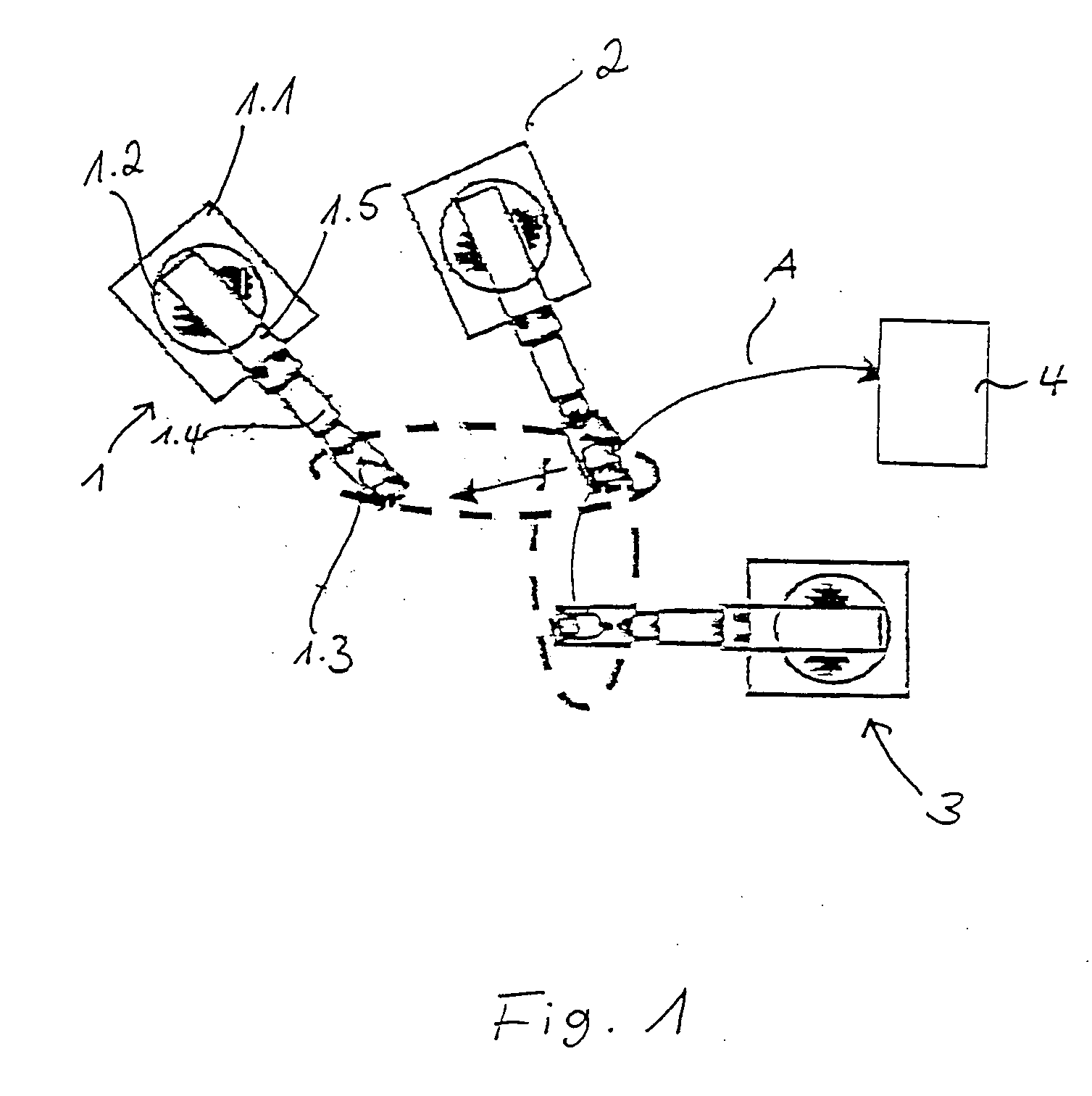Process for protecting a robot from collisions
a robot and process technology, applied in the field of process for protecting a robot from collisions, can solve the problems of robot damage, flange tool, transport system or other peripheral components, semaphore access taking place via data lines, and failure to offer the security of semaphore, so as to achieve the effect of reliable protection from collisions
- Summary
- Abstract
- Description
- Claims
- Application Information
AI Technical Summary
Benefits of technology
Problems solved by technology
Method used
Image
Examples
Embodiment Construction
[0039] Referring to the drawings in particular, FIG. 1 shows a robot cell with three cooperating robots 1, 2, 3. The individual parts socket 1.1, carrousel 1.2, rocker 1.3, robot arm 1.4 and robot hand with tool 1.5 are designated in robot 1. The other robots 2, 3 have a corresponding design. The robots are arranged such and operate such that there are collision areas, which are schematically indicated by broken lines in FIG. 1. For example, a collision would occur between robot 3 and robot 2 in the shown position of robot 2 if robot 3 moved from its position, which is likewise shown, into the position shown for depositing a part 4 corresponding to arrow A.
[0040] To prevent such a collision, interlocks are set and released, as they are shown in FIG. 2.
[0041] A working area used jointly, in which a collision could occur, is indicated by dotted lines here. For example, a robot 1 starts from its starting point R1Pstart and moves to a point R1P1 before the collision area P. By means o...
PUM
 Login to View More
Login to View More Abstract
Description
Claims
Application Information
 Login to View More
Login to View More - R&D
- Intellectual Property
- Life Sciences
- Materials
- Tech Scout
- Unparalleled Data Quality
- Higher Quality Content
- 60% Fewer Hallucinations
Browse by: Latest US Patents, China's latest patents, Technical Efficacy Thesaurus, Application Domain, Technology Topic, Popular Technical Reports.
© 2025 PatSnap. All rights reserved.Legal|Privacy policy|Modern Slavery Act Transparency Statement|Sitemap|About US| Contact US: help@patsnap.com



